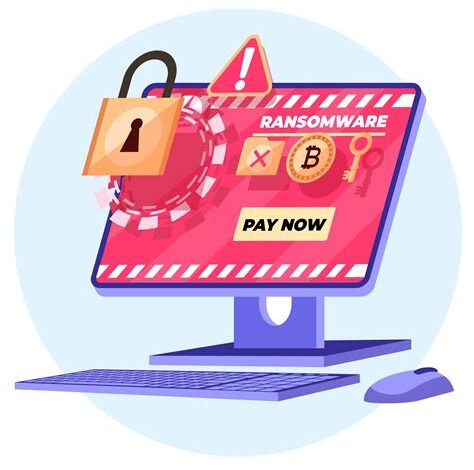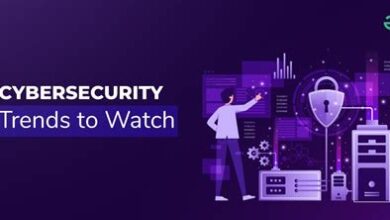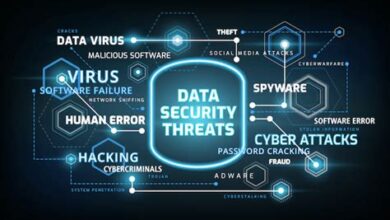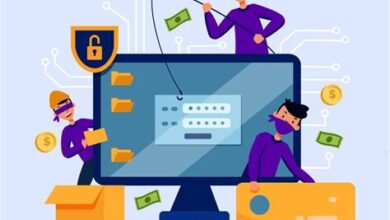Ransomware Attacks: Prevention and Recovery Strategies

In today’s digital landscape, understanding and mitigating Ransomware Attacks is crucial for businesses of all sizes. This blog post provides a comprehensive overview, starting with understanding the growing threat these attacks pose. It then details a step-by-step guide for implementing robust prevention measures, including strong passwords, multi-factor authentication, and regular security audits. Recognizing early signs of an attack is also vital, and the article highlights key indicators to watch for. Finally, it outlines effective recovery strategies to minimize damage and downtime in the event of a successful ransomware attack, ensuring business continuity and data preservation.Here’s the content section for your article:
Understanding The Growing Threat Of Ransomware Attacks
Ransomware attacks have become an increasingly prevalent and sophisticated threat in the digital landscape. These malicious attacks, where cybercriminals encrypt an organization’s data and demand a ransom for its release, are no longer just a nuisance but a significant risk to businesses of all sizes. The rise of ransomware-as-a-service (RaaS) has further democratized these attacks, allowing even less technically skilled individuals to launch devastating campaigns. As a result, understanding the nature and scope of these threats is the first crucial step in building a resilient defense strategy.
The impact of ransomware attacks extends far beyond the immediate financial cost of the ransom itself. Organizations face significant disruptions to their operations, potential damage to their reputation, and the loss of valuable data. Moreover, the recovery process can be lengthy and complex, involving forensic investigations, system restoration, and the implementation of enhanced security measures. The evolving tactics of ransomware groups, including double extortion (stealing data before encryption) and triple extortion (adding DDoS attacks to the mix), further compound the challenges faced by organizations.
| Ransomware Type | Description | Target |
|---|---|---|
| Locky | Encrypts files with a strong algorithm, demanding ransom in Bitcoin. | Businesses across various sectors |
| WannaCry | Exploits vulnerabilities in Windows systems to spread rapidly across networks. | Healthcare, government, and critical infrastructure |
| Ryuk | Targets organizations with high revenue, demanding large ransom payments. | Large enterprises and government entities |
| REvil (Sodinokibi) | Known for its ransomware-as-a-service model and aggressive tactics. | Managed Service Providers (MSPs) and their clients |
- Key Aspects of Ransomware:
- Encryption: The core mechanism involves encrypting data, rendering it inaccessible without the decryption key.
- Ransom Demand: Attackers demand a ransom, typically in cryptocurrency, for the decryption key.
- Extortion Tactics: Modern ransomware often involves data exfiltration and the threat of public disclosure.
- Attack Vectors: Common entry points include phishing emails, software vulnerabilities, and compromised credentials.
- Rapid Spread: Ransomware can quickly spread across networks, encrypting multiple systems and devices.
- Data Recovery Challenges: Even with a ransom payment, data recovery is not guaranteed and can be a complex process.
To effectively combat the growing threat of ransomware attacks, organizations must adopt a proactive and multi-layered approach to cybersecurity. This includes implementing robust prevention measures, such as regular security audits, employee training, and the deployment of advanced threat detection systems. Furthermore, having a well-defined incident response plan and data backup strategy is crucial for minimizing the impact of a successful attack and ensuring business continuity. By understanding the evolving landscape of ransomware and taking proactive steps to mitigate the risks, organizations can significantly reduce their vulnerability to these devastating attacks.
Ransomware is a constantly evolving threat, and organizations must stay vigilant and adapt their security measures accordingly. A proactive approach, combining robust prevention strategies with effective incident response capabilities, is essential for minimizing the risk and impact of these attacks.
Implementing Robust Prevention Measures: A Step-By-Step Guide
Preventing ransomware attacks requires a multi-faceted approach, combining proactive measures with robust security protocols. It’s not about relying on a single solution but creating layers of defense to minimize vulnerabilities. This involves educating your employees, securing your data, and implementing advanced threat detection systems. Let’s delve into a step-by-step guide to fortify your defenses against these evolving cyber threats.
Ransomware Prevention Measures
Measure Description Importance Employee Training Educate employees about phishing, suspicious links, and safe internet practices. High Data Backups Regularly back up critical data to secure, offline locations. Critical Software Updates Keep all software, including operating systems and applications, updated with the latest security patches. High Firewall Configuration Properly configure and maintain firewalls to control network traffic. Medium The following steps are crucial to building a resilient defense against ransomware. Remember that consistency and vigilance are key to maintaining a secure environment. A strong security posture can significantly reduce the risk of a successful attack. Prioritizing these steps ensures that your organization is well-prepared to face potential threats.
Steps to Prevent Ransomware:
- Implement a robust antivirus and anti-malware solution with real-time scanning.
- Regularly update all software and operating systems to patch security vulnerabilities.
- Enforce strong password policies and multi-factor authentication (MFA) for all accounts.
- Conduct regular security awareness training for all employees to recognize phishing attempts and other social engineering tactics.
- Segment your network to limit the spread of ransomware in case of a breach.
- Regularly back up critical data to an offline location or a secure cloud storage solution.
A proactive approach to cybersecurity is essential. Rather than simply reacting to threats as they emerge, organizations must take the initiative to identify and mitigate potential risks. This involves continuous monitoring of network activity, regular vulnerability assessments, and staying informed about the latest ransomware trends and tactics. The more proactive your security measures, the better equipped you will be to defend against sophisticated attacks.
Employee Training and Awareness
Your employees are often the first line of defense against ransomware attacks. Comprehensive training programs should educate them about the dangers of phishing emails, malicious links, and suspicious attachments. Regular security awareness campaigns can reinforce these lessons and keep security top of mind.
“The human element is often the weakest link in the security chain. Investing in employee training can significantly reduce the risk of a successful ransomware attack.”
Regular Data Backups
Backing up your data is crucial. Implement a robust backup strategy that includes regular, automated backups stored in a secure, offline location. This ensures that you can restore your systems and data quickly and efficiently in the event of a ransomware attack, minimizing downtime and data loss. Test your backups regularly to ensure they are working correctly.
Advanced Threat Detection Systems
Implementing advanced threat detection systems can provide real-time monitoring and analysis of network traffic, identifying and blocking suspicious activity before it can cause damage. These systems often use machine learning and artificial intelligence to detect anomalies and emerging threats. Consider investing in intrusion detection systems (IDS) and intrusion prevention systems (IPS) to enhance your security posture.
Detecting Early Signs Of An Attack: Key Indicators
Early detection is crucial in mitigating the impact of ransomware attacks. Recognizing the subtle indicators can provide valuable time to respond and prevent widespread encryption. Vigilance across all systems and user awareness are key components of a strong defense strategy. By understanding what to look for, organizations can significantly reduce their risk and improve their overall security posture. Continuous monitoring and proactive threat hunting are essential practices in today’s threat landscape.
- Unusual Network Activity: Spikes in data traffic or connections to unfamiliar IP addresses.
- Suspicious File Activity: Unexpected creation, modification, or deletion of files.
- Disabled Security Tools: Antivirus or firewall programs being turned off or disabled.
- Ransom Notes: The appearance of ransom notes in various directories.
- System Performance Issues: Slowdowns or crashes indicating heavy processing loads.
- Login Anomalies: Unusual login times or failed login attempts from unknown sources.
One of the first signs of a ransomware attack can be observed through changes in system performance. Computers may start running slower than usual, applications might take longer to load, and there could be frequent system crashes. This degradation in performance often indicates that malicious processes are consuming system resources, encrypting files in the background. Monitoring CPU usage, memory consumption, and disk activity can help identify these anomalies early on. Regular system audits and performance baselines are valuable tools for detecting deviations from normal operations.
Indicator Description Action High CPU Usage Unexplained spikes in CPU usage, particularly during off-peak hours. Investigate running processes; scan for malware. Suspicious Network Traffic Large data transfers to unknown or suspicious IP addresses. Monitor network connections; block suspicious IPs. Unusual File Extensions Files with unfamiliar or encrypted extensions appearing on the network. Isolate affected systems; identify the ransomware variant. Disabled Security Software Antivirus or endpoint detection and response (EDR) solutions being disabled. Re-enable security tools; investigate the cause of disablement. User behavior also plays a critical role in identifying potential ransomware attacks. Employees should be trained to recognize phishing emails, suspicious links, and unusual requests for information. Educating users about the common tactics used by cybercriminals can significantly reduce the likelihood of a successful attack. Encourage employees to report any suspicious activity immediately. A well-informed workforce is a valuable asset in detecting and preventing ransomware incidents. Regular security awareness training programs are essential for maintaining a strong security culture.
In conclusion, detecting early signs of a ransomware attack requires a multi-faceted approach that combines technological monitoring with user awareness. By staying vigilant and proactively monitoring systems and networks, organizations can significantly improve their ability to detect and respond to potential threats. A quick and effective response can minimize damage and downtime, safeguarding critical data and ensuring business continuity.
Here’s the content section you requested:
Effective Recovery Strategies: Minimizing Damage And Downtime
Recovering from Ransomware Attacks requires a swift, coordinated, and well-rehearsed approach. The primary goal is to minimize data loss, restore operational functionality, and prevent future incidents. A robust recovery plan should be in place well before any attack occurs, outlining clear roles, responsibilities, and procedures. This plan should be regularly tested and updated to reflect changes in the IT environment and the evolving ransomware landscape.
Ransomware Recovery Resources
Resource Type Description Importance Data Backups Regular, tested, and isolated backups of critical data. Critical Incident Response Team Designated team with expertise in IT, security, and communication. High Recovery Software Tools for data restoration, decryption, and system recovery. Medium Communication Plan Strategy for internal and external communication during and after the attack. High Upon discovering a ransomware attack, the immediate priority is containment. This involves isolating infected systems from the network to prevent further spread. Disconnecting affected machines from the internet and internal networks is crucial. Simultaneously, it’s vital to identify the type of ransomware involved, as this will inform the decryption process and potential recovery methods. Engaging cybersecurity experts at this stage can provide invaluable assistance in analyzing the attack and guiding the recovery efforts.
Actionable Recovery Steps:
- Isolate Infected Systems Immediately.
- Identify the Ransomware Strain.
- Assess the Scope of the Attack.
- Restore Data from Clean Backups.
- Verify System Integrity Post-Recovery.
- Implement Enhanced Security Measures.
Data restoration is a cornerstone of ransomware recovery. Assuming that viable backups are available, the process involves restoring the affected systems to their pre-infection state. It’s imperative to ensure that the backups themselves are clean and free from malware. After restoring the data, rigorous testing is necessary to verify the integrity of the systems and data. In cases where backups are unavailable or compromised, exploring decryption options may be necessary, although success is not guaranteed and should be approached with caution.
Finally, post-recovery analysis is essential to understand how the attack occurred and to prevent future incidents. This involves reviewing security logs, identifying vulnerabilities, and implementing enhanced security measures. Employee training programs should be updated to educate users about phishing scams and other common attack vectors. Continuously monitoring the IT environment for suspicious activity and maintaining up-to-date security software are crucial for long-term resilience against Ransomware Attacks.



